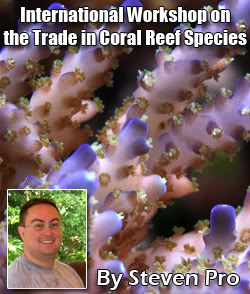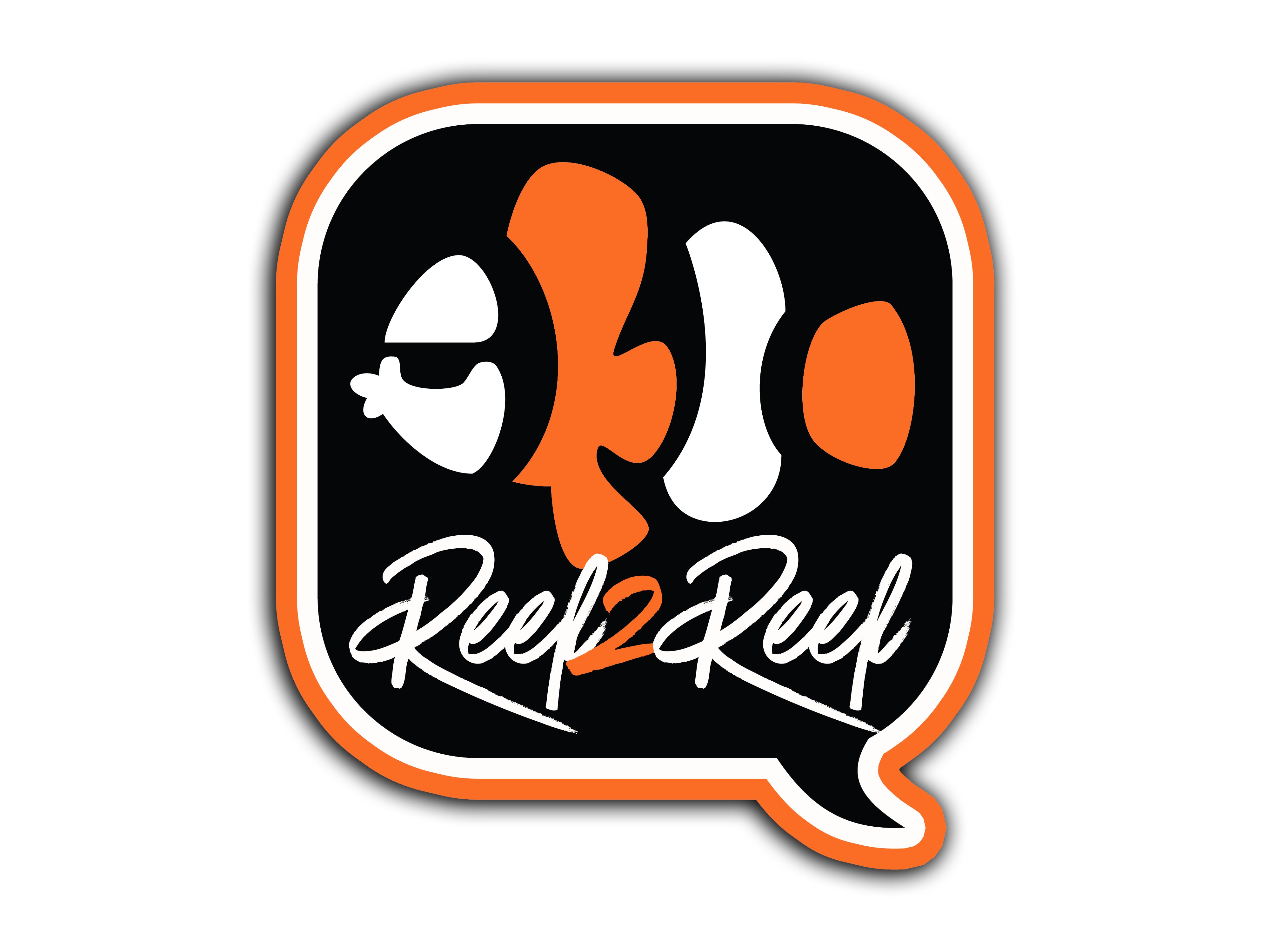revhtree
Owner Administrator
View Badges
Staff member
Super Moderator
Reef Squad
Partner Member 2024
Excellence Award
RGB
Photo of the Month
Article Contributor
R2R TV Featured
Hospitality Award
Article Administrator
Black Friday Sponsor
Partner Sponsor 2023
Industry Professional
My Aquarium Showcase
- Joined
- May 8, 2006
- Messages
- 48,534
- Reaction score
- 93,332

My Trip to the International Workshop on the Trade in Coral Reef Species:
Development of International Guidelines for Environmentally Friendly Stony Coral Mariculture
I recently had the pleasure of attending the International Workshop on the Trade in Coral Reef Species: Development of International Guidelines for Environmentally Friendly Stony Coral Mariculture. This workshop was conducted in beautiful Bali Indonesia. The National Oceanic and Atmospheric Administration organized it in conjunction with a non-profit organization called The Ocean Foundation.
In attendance were representatives from the US government, non-profit organizations, US ornamental industry, and academia. The host country was also very well represented as most members of AKKII were there (Asosiasi Koral Kerang dan Ikan hias Indonesia, also known as the Indonesian Coral, Shell, and Ornamental Fish Association). In addition, representatives from Papua-New Guinea, the Philippines, Sri Lanka, Timor Leste, and Malaysia came along with two importers from Canada and a gentleman from the UK/European Union who deals with CITES regulations there. It was quite an impressive gathering to say the least and I learned a great deal during my time there.
The purpose of this workshop was to work together towards developing a best practices manual for coral mariculture. While much was covered during the week there, for now I am going to limit my discussion to the country reports as I feel they would be the most interesting to my fellow hobbyists and the most telling for the near future of the industry.
Papua-New Guinea
Most hobbyists know something about Papua-New Guinea and the EcoEZ and SEASMART programs. Think Lightning Maroon Clownfish. They had a hugely successful showing at MACNA 2010 in Orlando, Florida where they created a lot of buzz for the country and their forthcoming products. Unfortunately, soon thereafter there was a falling out between EcoEZ/SEASMART and the government of Papua-New Guinea.
I wish I had some concrete good news to share. It does seem like they are still interested in creating an ornamental marine industry in PNG, but the politics of the situation still seem up in the air to me. I could equally believe that we will see exports from PNG in mere months, as I could believe that a year from now there would still be no progress. This is all very unfortunate because there was such a great buzz surrounding PNG last year. All of this turmoil has certainly damaged the “brandâ€.
The Philippines
While the Philippines have long been known as a major supplier of marine fish for the trade (in fact on a per unit basis, the Philippines is the largest supplier of fish to the US per recent research by Dr. Andrew Rhyne), they do not permit any collection or export of corals or liverock for the trade. They do seem to have a nice program to mariculture corals, but they do so mostly for research and reef restoration efforts. These efforts include both fragmentation methods and more importantly collection of gametes via sexual reproduction in the wild, similar to the SECORE program. The larval corals are settled out and grown in captivity until they are large enough to be successfully relocated out in the wild. These maricultured corals are then placed in areas that have otherwise been damaged and need new coral cover.
It is my understanding that they are at least discussing the possibility of selling some of these maricultured corals. The idea being that the revenue could be channeled back to subsidize or possibly even pay for all the research and restoration activities.
Since the Philippines are the major fish supplier for the trade, there are plenty of facilities already available for export. With a little training on the difference on handling and packing corals for shipping, the Philippines could quickly become the 800-pound gorilla of coral mariculture.
Sri Lanka
Sri Lanka has long been known as a supplier of high-quality fish and mobile invertebrates. The fire shrimp (Lysmata debelius) is the quintessential Sri Lankan export, but they are also well known for having good fish too. That said, there is currently no coral (or liverock) coming out of Sri Lanka. Right now, at least one company is seriously pursuing coral mariculture and obtaining permits to export the same. They have brought in outside consultants to help build a case for the government that mariculture is viable and can be done in an environmentally friendly fashion. Additionally, they are looking at setting up a breeding operation for the fire shrimp, so one day there might be captive bred fire shrimp coming out of Sri Lanka as well.
Timor Leste
US hobbyists might be more familiar with the name East Timor, but at the conference they went by Timor Leste, so I will continue to use that name here. Currently, they have some seaweed and fish mariculture for food purposes, but nothing for ornamentals. It seemed they were on more of a fact-finding mission. I would be surprised if maricultured corals are available coming out of Timor Leste anytime soon, but you never know.
Malaysia
It was a surprise to me, but there is already a coral mariculture operation working in Malaysia right now. I have not heard anything specifically about Malaysia corals. Perhaps they are all going to Europe and Asia or if they are coming into the US, they might not be getting promoted as Malaysian. That said, they exported approximately 1,000 pieces in 2008 and then almost 8,000 pieces in 2009. They didn’t specify any subsequent years, but that does show a nice ramp up in growth. Additionally, they have hired a well-known person from the industry that has operated other coral mariculture facilities overseas. He is supposedly helping them develop guidelines for harvesting mother colonies and production of commercial coral fragments.
Indonesia
The host country had some interesting developments as well. I saw artificial liverock being developed that was indistinguishable from the real thing. I also learned that they continue to increase CITES quotas for maricultured corals while simultaneously lowering those quotas for the same wild collected species. They envision a time when they are doing nothing but maricultured for some species. At the same time, I witnessed a lot of work being put forth to develop new genera of maricultured corals, particularly LPS corals. It should only be a matter of time before we start seeing maricultured LPS coming out of Indonesia with the regularity that we see all the SPS.
Summary
What does this mean for hobbyists? Well, if even just a few of these countries start large-scale mariculture programs, we could see a significant increase in quantity and variety of maricultured corals for sale. That would be a good thing. Different species, different growth forms, different colors. But, it has a downside as well. As with any supply and demand situation, if the supply increases dramatically, we could also see a drop in prices, particularly out of current supply countries such as Indonesia and Fiji.
The new, “hot†locations will come into vogue and be popular commodities for aquarium coral collectors to covet. I can envision many hobbyists clamoring for corals coming from the newest country to begin exports, if marketed properly. The release of corals from a locale where previously collection and export was banned should create many advertising opportunities and help drive demand for those corals over ones that are currently available. Eventually though, things should settle down and the prices of corals should equalize.
The downside to all this is if the supply does go up significantly, the price everyone gets will necessarily go down. While that might be good news for consumers, it is not great for producers. The price per unit will go down and could encourage bad practices to make up for the lost revenue. We might see some companies trying to save money in shipping costs, which could be detrimental to the health of the specimens or other money savings practices that might be harmful. I hope that things shake out quickly, that everyone can make a fair living, and that the reefs we all love are protected in the process.
Steven Pro has had an aquarium for as long as he can remember, but didn't get into marines until sometime in the early 1990's. He started working full-time in the ornamental aquatics industry in the summer of 1995, primarily doing design, installations, and on-going maintenance of aquariums. He has also worked previously for Red Sea and IceCap Inc. Along the way, he was a contributor to WetWebMedia, had over 40 articles published with more on the way, spoken at over 60 clubs and conferences, and co-hosted MACNA 19. He is currently the President of MASNA.

















